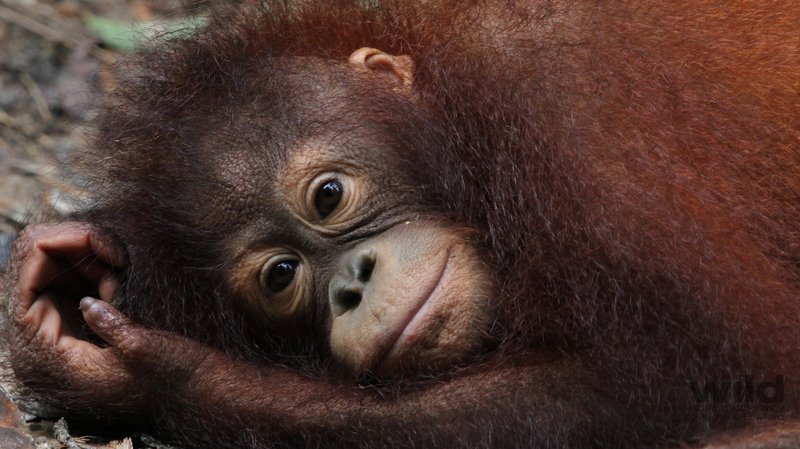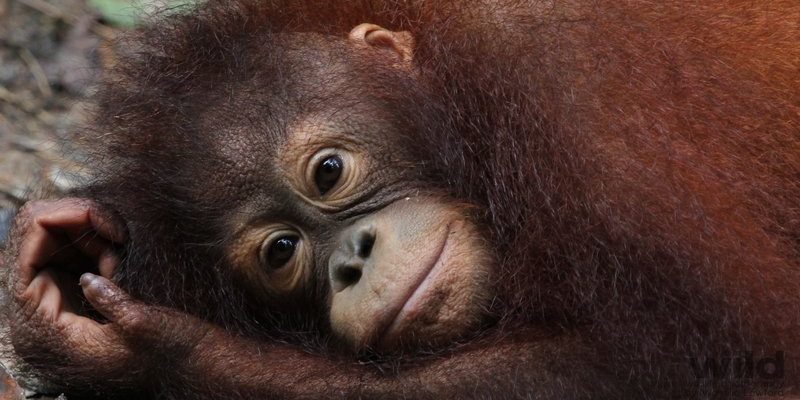
Think of it as a masterclass in parenting, where each lesson is taught with patience and love. In the wild, these mothers play a vital role—not just in keeping their little ones safe but also preparing them for the challenges of adult life. In this article, we’ll dive into the unique ways Bornean orangutans raise their young and explore why their parenting practices are so essential in maintaining healthy populations of these incredible primates.
1. The Bond Between Mother and Baby
Mother-oranutan bonds are among the strongest in the animal kingdom. When a baby orangutan is born, it’s completely dependent on its mother for survival. This bond begins even before birth, as the mother provides the necessary nutrients while the baby develops. After about eight and a half months, a tiny, vulnerable infant emerges, weighing only about three to four pounds.
From that moment on, the mother carries her baby everywhere. Whether she’s climbing high in the trees or foraging for fruit, the baby clings tightly to her. This constant physical contact not only ensures the baby’s safety but also fosters emotional health. In the wild, you might see a mother orangutan gently stroking her infant, creating a nurturing environment filled with affection.
As the baby grows, the mother’s role evolves. She starts to teach it how to navigate the complex rainforest—how to find food, build nests, and even interact with other orangutans. Each lesson is delivered with care, emphasizing the importance of both independence and connection.
2. Learning Through Play
You might be surprised to learn that play is an essential aspect of how Bornean orangutans raise their young. Just like human children, young orangutans are naturally curious and learn a lot through playful interactions. When you watch them swinging from branch to branch or playing hide-and-seek among the leaves, it’s not just fun—it’s an important learning opportunity.
During these playful moments, mothers often engage in activities that may seem trivial but are vital for skill development. For example, they may drop pieces of fruit to encourage their young ones to climb and retrieve them. This not only sharpens their physical abilities but also teaches them about problem-solving.
Here’s the thing: while the mother’s guidance is crucial, the adventures they go on together help orangutan babies develop their own sense of curiosity and innovation. Each tumble and triumph fosters resilience, ensuring they’re well-equipped for life in the wild.
3. The Importance of Nutritious Diets
Diet plays a significant role in how Bornean orangutans raise their young. A baby’s growth and health depend on a well-balanced diet, which is primarily fruit-based. The mother teaches her offspring what to eat and what to avoid, guiding them to the healthiest options.
As they forage together, mothers demonstrate how to identify ripe fruits and even which plants have medicinal properties. This knowledge is vital for survival; eating the wrong thing could lead to illness or worse. Young orangutans watch closely as their mothers select their meals, learning through imitation—an instinctual behavior seen in many animals.
In addition to fruit, orangutans eat leaves, bark, and insects. By exposing their young to a variety of foods, mothers ensure that their babies learn how to diversify their diet. It’s like giving them a toolkit for healthy living—one that will specifically help survive in the challenging environment of the rainforest.
4. Nest-Building Skills
Nest-building is another essential skill that mother orangutans teach their young. Nesting is vital for sleep and protection from predators. Every evening, a mother constructs a cozy nest high in the trees, using leaves and branches. The process can take a bit of time, but it’s an art form that ensures safety through the night.
When a baby orangutan watches its mother build a nest, it learns the intricacies involved, like selecting the right location and using appropriate materials. You might even see the little ones attempting to mimic their mothers, trying their best to create nests of their own. It’s a sweet sight that emphasizes the importance of learning through observation.
As they grow, young orangutans become proficient at nest-building, an essential skill for their independence later on. It’s one of those pivotal moments that shapes their identity as they transition from childhood to adulthood.
5. Social Skills and Communication
Interpersonal skills are crucial for Bornean orangutans, especially as they grow older. Socialization happens naturally between mothers and their infants, as they learn how to communicate through a range of vocalizations and body language. From soft calls to playful gestures, these interactions are essential for forming bonds with others.
As young orangutans spend time with their mothers, they also observe her interactions with other adults. This is how they learn the nuances of social behavior, from establishing dominance to fostering friendships. Watching their mothers navigate social hierarchies helps them understand their position within a group.
It’s interesting to note that social skills not only help in forming relationships but also play a vital role in survival. Bornean orangutans may face competition for food or mates, so being able to communicate effectively can make all the difference in a tense situation.
6. The Challenges Mothers Face
Raising young orangutans in the wild isn’t without challenges. Habitat loss, illegal poaching, and climate change threaten their survival. Mother orangutans struggle to find enough food and safe spaces to raise their babies. When the rainforest shrinks, their options become limited. This is where conservation efforts come into play.
Mothers must be resourceful, often traveling long distances to find suitable places to forage and build nests. You might even see them making difficult decisions, like choosing to move their young to a safer location. Each choice impacts not only their lives but also the future of the species.
Despite these challenges, mothers persevere. Their instinct to protect and nurture is incredibly strong, and they will go to great lengths to ensure their young survive. It’s a reminder of how resilient nature can be, even in the face of adversity.
7. The Journey to Independence
As they reach maturity, young orangutans gradually gain independence. This transition doesn’t happen overnight; it’s a carefully guided journey led by their mothers. The process can take several years, during which the young ones gradually venture out on their own while still returning to their mothers for guidance.
During this time, mothers encourage exploration by allowing their young ones to engage in activities independently. They might watch from a distance as their offspring practice climbing or foraging. The balance between independence and support is key—too much assistance can hinder growth, while too little can be dangerous.
Ultimately, the goal is to raise confident, self-sufficient orangutans who can navigate the wild on their own. It’s like preparing a child for adulthood; you want them to be ready for the world without holding their hand forever.
8. Why Their Parenting Matters
Understanding how Bornean orangutans raise their young highlights the importance of protecting these incredible creatures and their habitats. Their parenting practices not only ensure the survival of individuals but also help sustain healthy populations essential to the rainforest ecosystem.
Each mother’s unique approach provides valuable lessons for future generations. With the ongoing threats they face, it’s crucial that we recognize their significance. Supporting conservation efforts and preserving their habitats can make a lasting difference, ensuring that these magnificent animals continue to thrive.
When you see a Bornean orangutan swinging through the trees or nurturing its young, remember that it’s not just a moment of nature—it’s a complex, beautiful dance of life that deserves our attention and protection.
In conclusion, the way Bornean orangutans raise their young in the wild is a remarkable reminder of the resilience and nurturing spirit of nature. By fostering strong bonds, teaching essential skills, and overcoming challenges, these mothers play a vital role in ensuring the future of their species.

